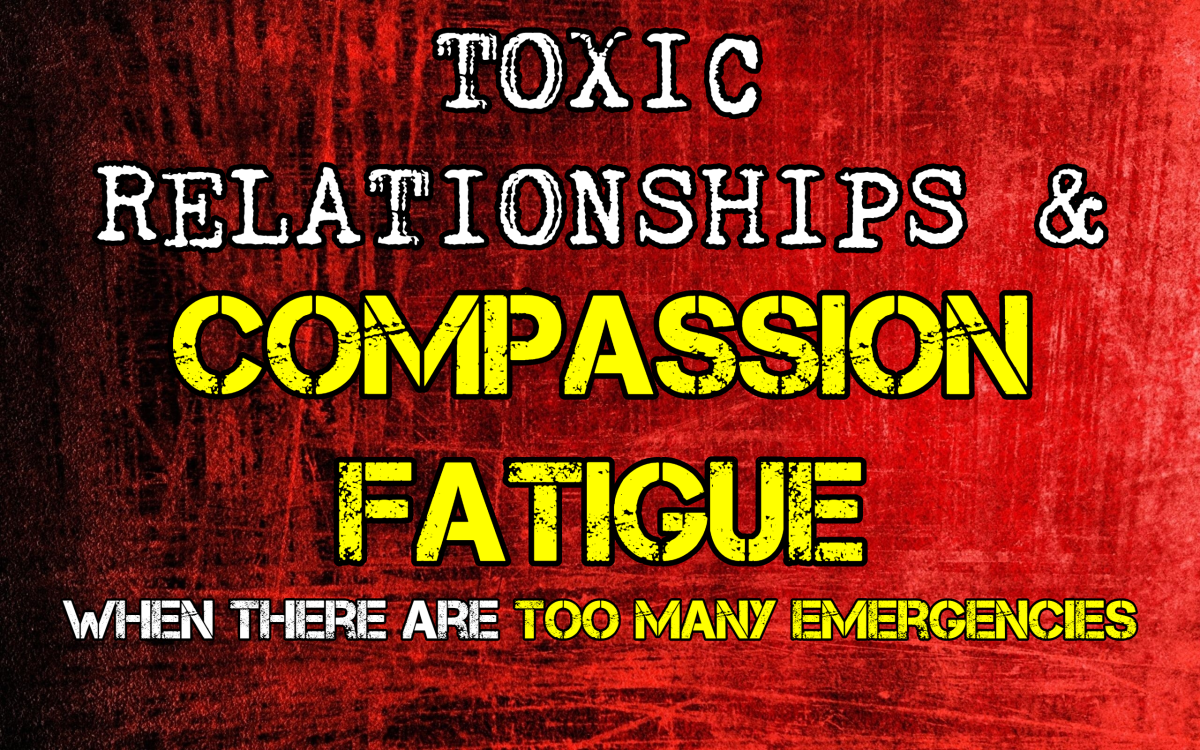Compassion Fatigue: Managing the Stresses of Employees

by Amber Maccione
Compassion fatigue is an exhaustion of the body, mind, and spirit due to extreme stress from caring for others and forgetting to also practice self-care. Anyone who has worked in the service industry has either felt it themselves or has known someone who has experienced this. As psychologists or anyone working in the field of psychology through counseling, therapy, or the like, know that ethically, he or she is responsible for his or her self-care and the reporting of anyone he or she notices is possibly experiencing compassion fatigue because the APA Ethical Principles of Psychologist and Code of Conduct states, “Psychologists refrain from initiating an activity when they know [ . . . ] there is a substantial likelihood that their personal problems will prevent [or interfere with] them [ . . . ] performing their work-related activities in a competent manner” (Zur, 2015). Also, the American Counseling Association (ACA) Code of Ethics and Standard of Practice states that each person is to monitor him or herself for signs of his or her own physical, mental, or emotional problems and refrain from practicing when impaired in any of these ways, seeking counseling when these problems have reached into his or her work (Zur, 2015). It also goes on to state that when one recognizes someone with compassion fatigue, he or she offers to help them seek assistance (Zur, 2015). Therefore, it is imperative that each person in the psychology field learn how to recognize compassion fatigue, address and communicate to someone who has compassion fatigue, and know how to help a person who has compassion fatigue.
What is it?
Compassion fatigue affects the person personally and can eventually spill over into his or her area of work. It is important to catch compassion fatigue before it starts to really cause issues in the work place and with clientele. Therefore, there are two sets of symptoms: personally symptoms, those that affect the person and his or her relationship to others, and work-related symptoms, those that affect the person as well as the organization he or she works for. A person suffering from compassion fatigue will begin to be disruptive, depressive, and irritating (Compassion Fatigue Awareness Program, 2015). Examples of this would be a person who isolates (Compassion Fatigue Awareness Program, 2015) from the rest of the team or blames (Compassion Fatigue Awareness Program, 2015) his or her mistakes on everyone else rather than taking responsibility for those mistakes. This person also could be the one that many employees write complaints (Compassion Fatigue Awareness Program, 2015) about or gossip about being difficult to work with. Looking into this person’s personal life, he or she could practice poor self-care (Compassion Fatigue Awareness Program, 2015) such as poor diet and little to no exercise. This person could also be using excessive amounts of alcohol or partaking in illegal substances (Compassion Fatigue Awareness Program, 2015). Legal problems can begin to occur for this individual (Compassion Fatigue Awareness Program, 2015). When confronted, he or she will probably deny (Compassion Fatigue Awareness Program, 2015) most of what is being said or push the accusations onto someone else.
Once the person’s compassion fatigue begins to spill out into the workplace, the organization will also start to feel the effects at its core. The above person will begin to call out (Compassion Fatigue Awareness Program, 2015) a lot causing others to have to pick up his or her job responsibilities, which in turn could cause others to become compassion fatigued as their work load is now more than what is expected. This could lead to friction among co-workers (Compassion Fatigue Awareness Program, 2015) causing more people to leave (Compassion Fatigue Awareness Program, 2015) because the work load is too much and/or tension within the company is too high. The above person also will begin to break rules, not meet deadlines, be combative and aggressive, refuse to change, and become apathetic to the vision of the organization (Compassion Fatigue Awareness Program, 2015). This one person could destroy the company from within because having compassion fatigue and no one stepping up to offer assistance and care.

Avenues of Communication
Before a person begins to experience compassion fatigue, an organization needs to ensure that the work environment is one that is open. This means that employees are free to communicate with one another whether they be in different departments and teams or even on different levels of authority. This is called downward, upward, and lateral communication, which allows for an open communication system to develop (McManus, 2006, p. 104). Having an open communication policy is a good start to ensuring that when a person begins to experience compassion fatigue, he or she can reach out to someone in the company or anyone in the company could reach out to him or her.
Before approaching someone who has compassion fatigue, one needs to have a plan that has been formulated from an assessment of the individual’s needs (McManus, 2006, p. 110). Having a non-confrontational approach by asking them how they are doing rather than directly confronting them would be the best way to assess the person’s needs. Also, observation of the person can also help in knowing what the person may need. When eventually confronting the person, ensure that the message comes across in an empathic way and the content of the conversation stays focused on the person’s needs and what assistance may be available for him or her (McManus, 2006, p. 110). Lastly, be sure that the timing of when this conversation happens is a good time, where things are calm and not rushed (McManus, 2006, p. 110).
Coping Strategies
Intervention
Whether a person has personally noticed his or her own compassion fatigue or a caring co-worker has empathetically brought it to his or her attention, there needs to be interventions in place to help individuals heal from compassion fatigue or prevent it all together. One intervention as well as maintenance strategy is self-care, which is the caring of self for the spiritual, mental, and physical aspects of who a person is fully. Physical exercise or activities (Compassion Fatigue Awareness Program, 2015) help keep the body fit and agile. Eating healthy food and having meals that are well balanced help keep the mind alert and the body energetic. Maintaining relationships and enjoying activities within those whether family, friend, or romantic (Compassion Fatigue Awareness Program, 2015) helps one enjoy life and build self-esteem. Journaling (Compassion Fatigue Awareness Program, 2015) helps one reflect on the day and release any emotions that may be overbearing. It helps release the tension by letting go. A restful sleep (Compassion Fatigue Awareness Program, 2015) also helps keep the mind alert and the body refreshed for the next day.
An organization also can offer interventions to help its employees heal from or prevent compassion fatigue. Having on-site professional resources, offering educational programs, and developing specialized retreats are three ways that an organization can be pro-active with handling compassion fatigue (Aycock & Boyle, 2009). Examples of onsite professional resources are counseling, support groups, debriefing sessions, massage sessions, and bereavement interventions (Boyle, 2011). Other examples could be having a gym or daycare services on-site. Testing with a compassion fatigue self-test (Compassion Fatigue Awareness Program, 2015) all employees annually or bi-annually on how they are doing would also be helpful in ensuring the compassion fatigue is caught early. Educational programs that educate people on coping skills, establishing boundaries, handling conflicts and dilemmas, as well as building a self-care plan can be beneficial (Boyle, 2011). The company could have guest speakers come and require employees to go to workshops, conferences, or in-services to obtain this education. Lastly, the company could hold annual or bi-annual retreats that require all employees to come, bringing their families to relax and fellowship for a weekend.

Conclusion
Compassion fatigue is a very real thing that affects people who put caring for others above caring for themselves. Sometimes an individual doesn’t realize that he or she is suffering and having an empathetic friend, family member, or co-worker is important so that he or she can heal from compassion fatigue and begin caring for others again after the healing has begun and the individual starts his or her self-care plan. Healing will take time, patience, and commitment (Compassion Fatigue Awareness Program, 2015) from the individual suffering and those around him or her, such as family, friends, and co-workers. Being supportive and understanding is imperative to the healing process. Eventually though, with the right assistance and a good self-care plan in place, an individual can fully recover from compassion fatigue.
References
Aycock, N. & Boyle, D. (2009). “Interventions to Manage Compassion Fatigue in Oncology Nursing.” [Abstract] CJON. Retrieved from https://cjon.ons.org/cjon/13/2/interventions-manage-compassion-fatigue-oncology-nursing
Boyle, D. (2011). “Countering Compassion Fatigue: A Requisite Nursing Agenda.” OJIN. Medscape. Retrieved from www.medscape.com/viewarticle/745293_7
Compassion Fatigue Awareness Program. (2015). Retrieved from www.compassionfatigue.com
McManus, J. (2006). Leadership: Project and human capital management. Burlington, MA: Elsevier.
Zur, O. (2015). “Codes of Ethics on Therapists’ Impairment, Burnout, and Self Care.” Zur Institute. Retrieved from www.zurinstitute.com/ethicsofburnout.html
Copyright © 2015 http://ambercita04.hubpages.com/ All Rights Reserved
© 2015 Amber







